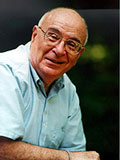David Farber

Understanding the history of Networking required the reconstruction of three competitive local area networking technologies: Ethernet, token ring, and token bus. This interview begins the story of how token ring became an integral part of the University of California, Irvine (UCI)’s Distributed Computer System (DCS), before being transferred to the Massachusetts Institute of Technology (MIT) with the assistance of DARPA before coming up against the mystery of how did IBM get the token ring technology and commit to it. But that is getting ahead of our story: so here is the interview of David J. “Dave” Farber.
The two of us slowly walked across the University Delaware campus to one of Dave’s favorite luncheon spots, and occupied an empty booth. As we continued to talk, I set my recorder up and we placed our orders. Dave had already told me that this was going to be his last term at Delaware before he intended to take a break from academic life to complete work on three computer networks he had conceived: CSNET, NSFNet, and the National Research and Education Network (NREN). Dave’s career had been a mixture of commercial and academic postings. After graduating from Stevens Institute of Technology in 1956, he worked for Bell Laboratories for 11 years where he helped design the world’s first electronic switching system (ESS-1) and the SNOBOL programming languages. He next joined RAND Corporation in Southern California where he was “heavily involved with, and affected” by, Paul Baran’s work. Next he spent a year and a half working at Scientific Data Systems (SDS), while simultaneously teaching in the evenings at UCI.
By late ’69, convinced that Xerox was “wrecking” SDS, Farber took an Acting Associate Professor position at UCI. Lacking a Ph.D., he was given two years “ to come up with a project, get it funded, and get enough published on it, enough work done, so he could go up for a permanent position.” Intrigued with the advent of minicomputers, Farber settled on a design to build a totally decentralized computer system of three minicomputers interconnected with a token ring local area network: it was to become the DCS. He submitted a funding proposal to the NSF in 1970 for $250,000 a year. It was funded. Then in 1973, Farber presented a paper on the DCS system that stimulated curiosity, not only about the distributed system, but also the token ring local area network. So in 1975, when the Laboratory of Computer Science (LCS) of MIT became interested in finding a LAN technology they could use, DARPA directed them to Farber at UCI. After a visit from LCS’s Ken Pogran, the decision was made. MIT imported the token ring from UCI.
Keywords: Bell Labs, Rand Corporation, UCI, DCS, NSF, token ring